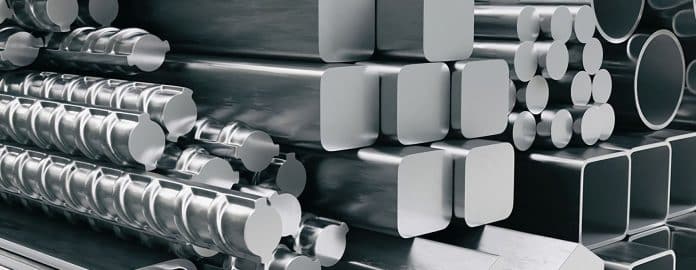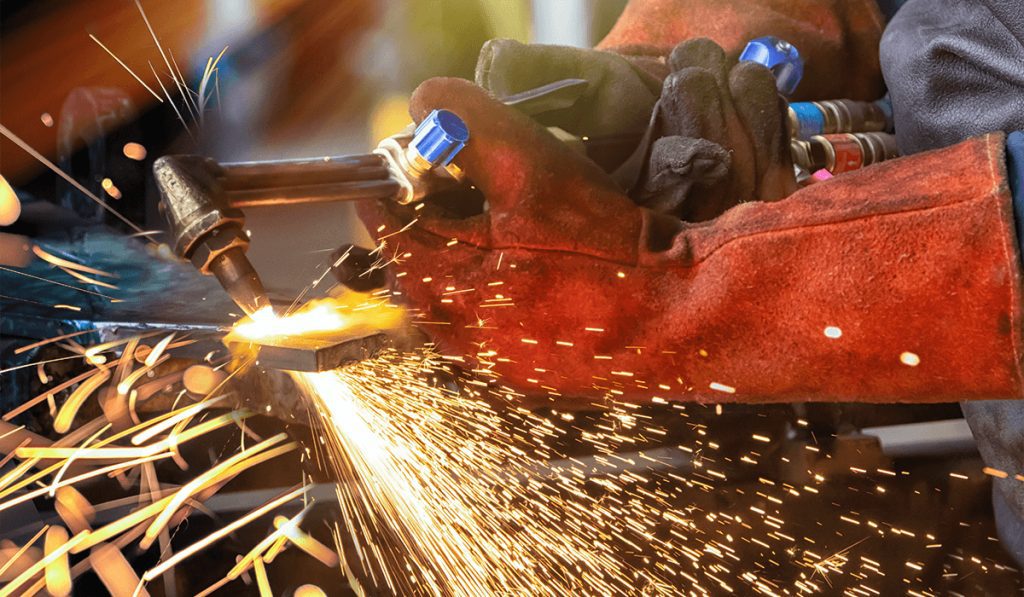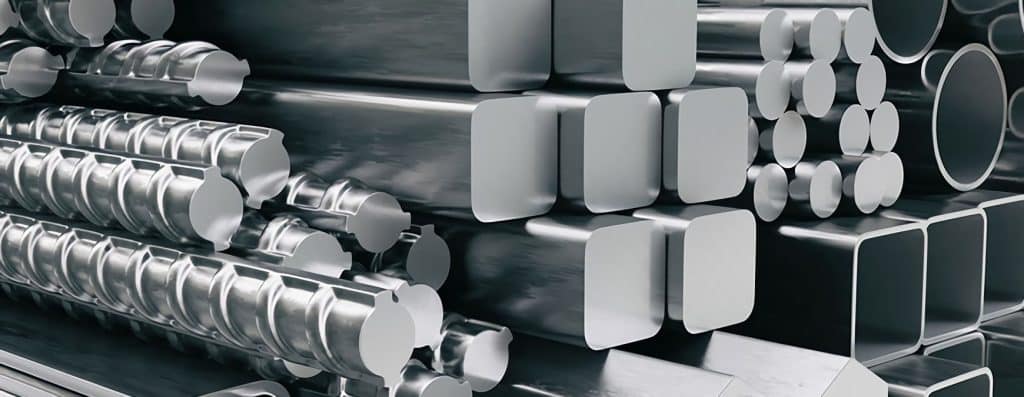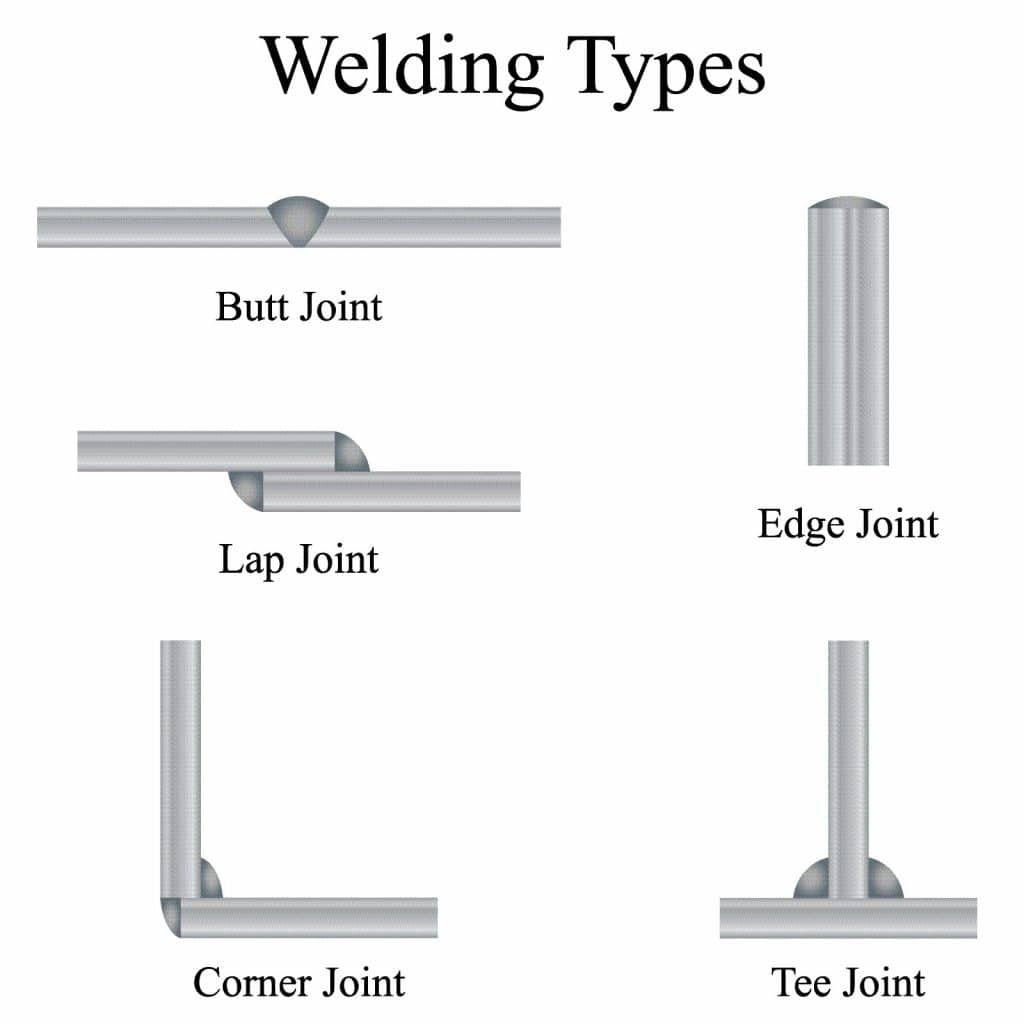We’ve all been there, faced with the dilemma of trying to join two metal pieces that are made from different materials. Whether it’s stainless steel and aluminum, or cast iron and copper, the question remains the same: can you weld two different types of metal together? In this article, we’re going to explore the fascinating world of metal welding and uncover the answer to this burning question. Prepare to be amazed as we discover the techniques, challenges, and possibilities of welding different types of metals together.
Review contents
Can You Weld Two Different Types Of Metal Together?
Understanding the Basics of Welding
Welding is a fabrication process that involves joining materials, particularly metals, through the application of heat and pressure. It is widely used in various industries such as construction, automotive, aerospace, and manufacturing, to name a few. Welding enables the creation of strong and durable connections between metal parts, ensuring structural integrity and enhancing their functional capabilities.
Factors to Consider Before Welding Different Types of Metal
Before attempting to weld two different types of metals together, several factors need to be taken into consideration. One of the primary factors is the metallurgical compatibility of the materials. Different metals have varying chemical compositions, which can affect their ability to form a solid bond during the welding process. It is essential to assess the compatibility of the metals to ensure a successful weld.
Another crucial factor to consider is the difference in mechanical properties between the two metals. Metals vary in terms of their melting points, thermal conductivity, coefficient of thermal expansion, and tensile strength. These variations can pose challenges during the welding process, as the metals may behave differently under heat and pressure. Understanding these differences is vital to determine the appropriate welding technique and parameters for a successful weld.
This image is property of qph.cf2.quoracdn.net.
Common Types of Metals and Their Weldability
Not all metals can be easily welded together due to differences in composition, properties, and behavior under heat. Some metals are inherently more compatible, while others require special techniques or intermediary materials for successful welding. Let’s explore the weldability of common types of metals:
Steel
Steel, being one of the most widely used metals, can be welded to various other metals. However, it is crucial to consider the carbon content and other alloying elements present in the steel. Low carbon steel, such as mild steel, is highly weldable and can be combined with other metals effectively. High carbon steel, on the other hand, may require preheating or post-weld heat treatment to prevent cracking.
Aluminum
Aluminum is another commonly welded metal, particularly in industries such as automotive and aerospace. When welding aluminum, it is essential to account for its high thermal conductivity and low melting point compared to other metals. Specialized welding techniques, such as TIG (Tungsten Inert Gas) welding or MIG (Metal Inert Gas) welding with modified shielding gases, are often used to achieve satisfactory welds with aluminum.
Stainless Steel
Stainless steel is known for its corrosion resistance and is frequently used in food processing, marine, and architectural applications. Welding stainless steel can be challenging due to its alloying elements, which can lead to the formation of brittle phases and sensitization issues if not handled correctly. Using suitable filler metals, controlling heat input, and employing proper shielding gases can help overcome these challenges and produce high-quality stainless steel welds.
Copper and its Alloys
Copper and its alloys, such as brass and bronze, are commonly welded in various applications. However, welding copper requires careful consideration of its high thermal conductivity, which can lead to rapid heat dissipation. Proper pre-heating, selection of appropriate welding techniques, and managing heat input are essential to ensure successful copper welds.
Welding Techniques for Joining Different Metals
Several welding techniques are employed to join different types of metals effectively. The choice of the welding technique depends on factors such as the metals to be welded, their thicknesses, joint configurations, and desired weld properties. Some common welding techniques used for joining dissimilar metals include:
Fusion Welding
Fusion welding processes, such as arc welding, involve the melting and solidification of base metals to form a metallurgical bond. Shielded Metal Arc Welding (SMAW), Gas Metal Arc Welding (GMAW), Gas Tungsten Arc Welding (GTAW), and Flux-Cored Arc Welding (FCAW) are popular fusion welding techniques utilized for joining different metals. These techniques provide good control over the welding parameters and can be adapted to various metal combinations.
Solid-State Welding
Unlike fusion welding, solid-state welding processes create a bond between metals without melting the base materials. They often involve applying heat and pressure to achieve atomic diffusion and mechanical interlocking between the metals. Friction Stir Welding (FSW), Explosive Welding, and Ultrasonic Welding are examples of solid-state welding techniques that can be used to weld dissimilar metals. These techniques are particularly suitable for joining metals with significantly different melting points or those susceptible to distortion during melting.
Brazing and Soldering
Brazing and soldering are joining techniques that employ a filler material with a lower melting point than the base metals. These processes involve heating the filler metal until it melts and flows into the joint, creating a strong bond upon solidification. Brazing is typically used for higher-temperature applications, while soldering is suitable for lower-temperature applications. Both techniques are commonly used for joining dissimilar metals, as they can accommodate materials with distinct melting points and minimize the risk of distortion.
This image is property of www.appmfg.com.
Using Intermediary Materials for Welding Dissimilar Metals
In cases where two different types of metals are difficult to weld directly due to their incompatibility, intermediary materials can be employed as a bonding agent. These materials, known as filler metals or welding electrodes, possess certain properties that allow them to form a bond between the dissimilar metals effectively.
Filler metals can act as a bridge between two dissimilar metals by melting at a lower temperature than the base metals, thereby facilitating the formation of a durable joint. Depending on the specific metals being welded, a variety of filler metals with appropriate chemical compositions and melting points are available to ensure a reliable bond.
Pre-Weld Preparation for Joining Different Types of Metals
Before attempting to weld different types of metals together, proper pre-weld preparation is crucial. Here are some key steps to follow:
Cleaning and Surface Preparation
Thoroughly clean the surfaces to be welded to remove any dirt, rust, or contaminants. This can be done using wire brushes, sandpaper, or chemical cleaners. Proper surface preparation is essential to ensure a clean welding environment and maximize the chances of a successful weld.
Joint Design and Fit-up
Consider the joint design and fit-up configuration. Proper joint design influences weld strength and quality. It is important to choose an appropriate joint design, such as butt joint, lap joint, or T-joint, based on the metals being welded and the intended application. The fit-up of the joint should be precise, ensuring proper alignment and sufficient gap for the welding process.
Compatibility Testing
Perform compatibility testing, especially when welding dissimilar metals. This involves conducting sample welds using the chosen welding technique and parameters to evaluate the weld’s integrity. Compatibility testing helps identify any potential issues or limitations before proceeding with the final welding process.
This image is property of www.tws.edu.
Safety Precautions When Welding Dissimilar Metals
Welding involves working with high temperatures, intense light, and potentially hazardous fumes. When welding dissimilar metals, it is essential to follow safety precautions to protect oneself and ensure a safe working environment. Some important safety measures to consider include:
Personal Protective Equipment (PPE)
Wear appropriate PPE, including welding helmets, gloves, aprons, and protective clothing, to shield yourself from sparks, intense light, and potential burns. Welding helmets with proper shade lenses help protect your eyes from harmful UV and infrared radiation emitted during the welding process.
Adequate Ventilation
Ensure adequate ventilation in the welding area to minimize exposure to welding fumes and gases. Welding in a well-ventilated space or using local exhaust ventilation can help remove harmful fumes and maintain air quality.
Fire Safety
Take necessary precautions to prevent fire hazards. Keep a fire extinguisher nearby, remove any flammable materials from the welding area, and be aware of potential fire risks, such as sparks or hot debris igniting nearby combustible materials.
Training and Certification
Obtain proper training and certification in welding techniques and safety procedures. This not only enhances your welding skills but also ensures that you possess the necessary knowledge to work safely with different types of metals and welding equipment.
Challenges and Limitations of Welding Different Types of Metal
Despite the versatility and effectiveness of welding, there are several challenges and limitations associated with welding different types of metals together. Some common challenges include:
Metallurgical Incompatibility
Certain combinations of dissimilar metals can pose challenges due to their metallurgical incompatibility. Differences in chemical composition and atomic structure can lead to the formation of brittle intermetallic compounds or weak joints. Proper material selection and understanding of metallurgy are crucial to mitigate these challenges.
Thermal Expansion and Distortion
Dissimilar metals often have different coefficients of thermal expansion, meaning they expand and contract at different rates when exposed to heat. This difference in thermal expansion can cause distortion or stress on the welded joint. Proper welding techniques, joint designs, and pre/post-weld heat treatments can help minimize these issues.
Electrochemical Effects
When two different metals are in contact, especially in the presence of an electrolyte, the possibility of electrochemical reactions arises. These reactions can lead to corrosion or degradation of the weld and surrounding areas. Protective coatings, proper filler material selection, and corrosion prevention strategies can help address this challenge.
This image is property of tigbrush.com.
Applications and Practical Examples of Welding Dissimilar Metals
The ability to weld dissimilar metals together opens up a wide range of applications and possibilities across various industries. Here are a few practical examples:
Automotive Industry
In the automotive industry, welding is frequently used to join dissimilar metals such as steel and aluminum. By combining these metals effectively, manufacturers can create lightweight and fuel-efficient vehicles without compromising on structural integrity and safety.
Aerospace Industry
The aerospace industry heavily relies on welding dissimilar metals to create complex structures and components. The combination of titanium, aluminum, and stainless steel enables the construction of lightweight yet robust aircraft parts.
Shipbuilding and Marine Applications
Welding dissimilar metals is essential in shipbuilding and marine applications. Aluminum-to-steel welding is commonly employed to create hull structures and other critical components, ensuring strength, corrosion resistance, and buoyancy.
Energy Sector
Welding dissimilar metals is vital in the energy sector, particularly in power plants and oil refineries. Various combinations of metals, such as carbon steel, stainless steel, and copper alloys, are welded together to create pipelines, heat exchangers, and other equipment that can withstand extreme conditions and corrosive environments.
Future Developments in Welding Technology
As technology continues to advance, so does the field of welding. Future developments in welding technology aim to address the challenges associated with welding different types of metals, further expanding the possibilities and applications. Some areas of focus for future developments include:
Advancements in Welding Techniques
Researchers and engineers continue to explore and refine existing welding techniques, such as laser welding, electron beam welding, and friction stir welding, to improve efficiency, versatility, and quality. New techniques may emerge, offering better control over the welding process and enhanced capabilities for joining dissimilar metals.
Material Science Innovations
Advancements in material science can lead to the development of new alloys and composites that are more easily weldable, making the process of joining dissimilar metals simpler and more efficient. Materials with improved compatibility and reduced susceptibility to cracking or intermetallic formation may revolutionize the welding industry.
Automation and Robotics
Automation and robotics are playing an increasingly significant role in welding processes. Future developments in this area may focus on improving the precision, speed, and adaptability of robotic welding systems, enabling efficient welding of dissimilar metals with minimal human intervention.
In conclusion, while it is possible to weld two different types of metals together, various factors need to be considered to ensure a successful and reliable weld. Metallurgical compatibility, mechanical properties, appropriate welding techniques, and safety precautions are crucial elements to address when joining dissimilar metals. With careful consideration, proper preparation, and the right welding techniques, welding dissimilar metals opens up a range of possibilities across industries, enhancing structural integrity, performance, and efficiency. As technology and materials continue to advance, the future of welding promises further advancements and innovations, making the process even more versatile and accessible.
This image is property of qph.cf2.quoracdn.net.






























